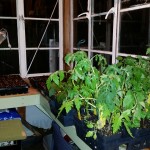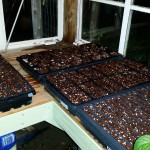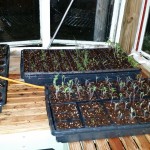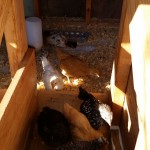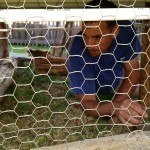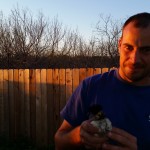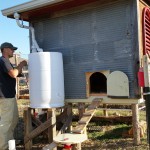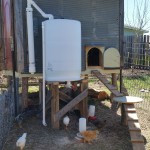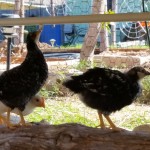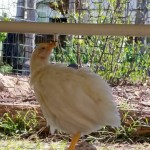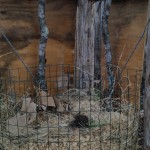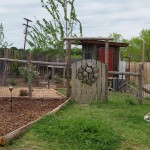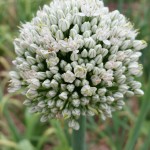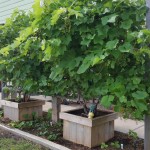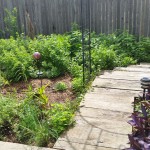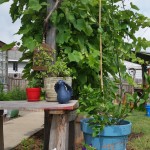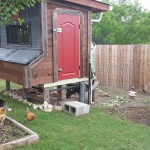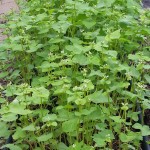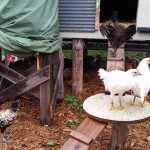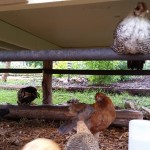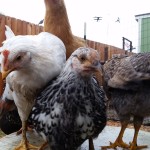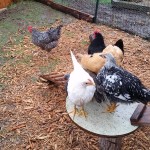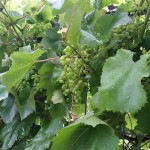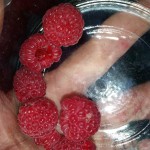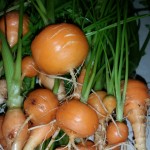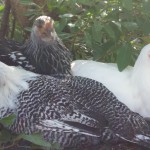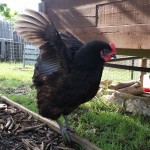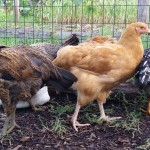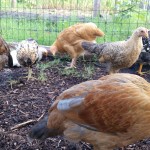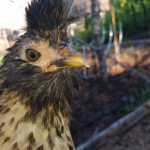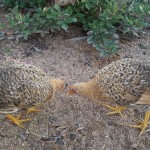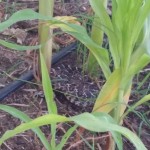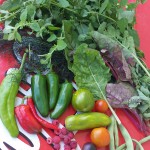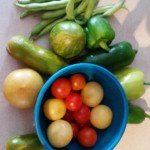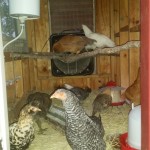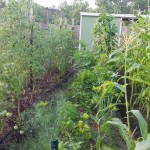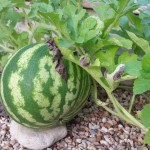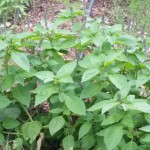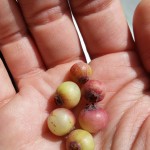How a Life Cycle Assessment (LCA) Measures Up With Energy Flows For Our Food System
Figure 1. Life Cycle Assessment (Anctil and Fthenakis 2012).
Understanding methodologies in calculating the energy flows of food systems is an essential part of making systems more sustainable and efficient. Is a good tool to measure the environmental impacts of a food product the life cycle assessment? The first LCA studies in the 1960s researched the impacts of beverage containers like Coca-Cola (Pray et al. 2012).
Within our food system, an LCA analyzes the various stages of the food cycle to prevent a shift to other life cycle stages (Pray et al. 2012). For a candy bar, this could include the impacts of manufacturing it through the production chain, including sourcing of ingredients, fuel to extract material, transportation for ingredients and candy, as well as the resources used in the “cradle-to-grave” life cycle (Pray et al. 2012).
The LCA can potentially measure emissions, water, waste, and help minimize costs but there are many downsides of the LCA model (Pax 2013). A standard life cycle assessment (LCA) has three phases; goal and scope, inventory analysis, and impact assessment (Pray et al. 2012). A fourth element could be life cycle interpretation (Reap et al. 2007). A survey was conducted on problems with the LCA model and it identified 15 problems concerning this scientific system (Reap et al. 2007). One of the six problems of utmost importance in using the LSA model is that the impact (phase 3) only takes the environment into consideration and not the economic and social impacts of the good that are being manufactured (Reap et al. 2007). Ingredients like corn syrup and synthetic chemicals that are used to flavor and color the candy impact nutrition, and the health of those who manufacture the candy, and unfortunately were not measured.
The functional unit for measuring food is unclear as caloric values, nutrition, and emotional value also play a role (Pray et al. 2012). Others argue that LCAs on food systems measure food systems differently like by mass or volume which makes it challenging to compare different food items (Pray et al. 2012).
We should create policies that provide solutions for methodologies that are more sustainable. In regards to sustainable development, the LCA model doesn’t necessarily promote sustainable decision making as sustainable production and consumption are lacking (Reap et al. 2007). These are a few reasons why we should question methodologies behind energy flows in our food systems so that we can create a smaller footprint for our planet. After I conducted three LCA assessments on an organic vegetable and fruit farm, an organic dairy cow farm, and a goat meat farm, I came to the conclusion that each farm is unique and presents it’s own challenges when analyzing data and computing formulas.
Multiple considerations must be taken into consideration when conducting an LCA. Which includes incorporating the availability and access to resources, waste management streams, value added value chains, regional location, marketing channels, the farming operation and management system, and energy measured as consumed by humans and machinery from a cradle-to-grave perspective. Ultimately a farmer, small business, non governmental organization (NGO), corporation, and so forth, must determine if the LCA will add value and improve a company’s triple bottom line. Otherwise it can be extremely inefficient due to the lack of accurate data, thus taking an extensive amount of time to conduct an analysis, while it is extremely expensive to conduct a thorough assessment. Therefore conducting a SWOT analysis on a quarterly basis will allow you to measure your targeted areas of opportunity and weaknesses , perhaps in a more efficient manner so that your business enterprise can address alternative solutions for a more sustainable future head on.
Bibliography
Anctil, Annick and Vasilis Fthenakis. “Chapter 4 Life Cycle Assessment of Organic Photovoltaics.” In Third Generation Photovoltaics, by Annick and Vasilis Fthenakis Anctil. Creative Commons, 2012.
Reap, John, Felipe Roman, Scott Duncan, Bert Bras. “A survey of unresolved problems in life cycle assessment: Part 1: goal and scope and inventory analysis.” International Journey of Life Cycle Assessment, June 28, 2007.
Pray, Leslie, Laura Pillsbury, Maria Oria. Exploring Health and Environmental Costs of Food: Workshop Summary. 2012.
Pax, Sara. “Food LCA: The Elusive Quest to Go Beyond Carbon.” Environmental Leader: Environmental & Energy Management News. June 4, 2013. http://www.environmentalleader.com/2013/06/04/food-lca-the-elusive-quest-to-go-beyond-carbon/ (accessed November 15, 2015).
Mid Summer Garden
Well I don’t think I can ever get caught up in the backyard these days! My gardens have become so large that I’m constantly cultivating the soil! It seems as if just as I’ve finished one thing, another bed needs redone!
It has been a very successful tomato season for us even though many farmers have said the complete opposite due to all of the rain! Plenty of heirloom tomatoes here! At this time I have planted about 102 in my small space. The reason for that is a greenhouse lesson learned. In the years prior I seed started in the house where the environment wasn’t ideal for sprouting. Davin was able to finish the greenhouse coop last fall and I was able to start my favorite varieties successfully for the first time. I put 3 seeds in each pod, and guess what, they all came up! So, I was able to sell a few at the farmer’s market, and donated about 40 to a few local families. Lesson learned! We will be expanding our greenhouse coop into a full greenhouse with aquaponics in one section and a chicken care station below, in addition to our seed starting stations. That will be our next big project after Davin remodels the new coop again. I swear, how many times can you rebuild something until you are satisfied with the end result?
Our chickens are 20 weeks old on Wednesday! One of our Campines has been laying for almost 2 weeks straight now but none of the other ladies have begun yet. The campine eggs are tiny, a little smaller than a guinea egg actually. The new flock is having a hard time adjusting to the heat I think because we had so much rain in the spring that it was actually pretty cool for much longer than it usually is. Since it’s dried up for the past month or so it’s been pretty hot and they are struggling, even though it hasn’t reached 100 degrees yet. Luckily we have multiple fans in both the new coop and the old coop so all of our hens are getting some relief. It does help them to lay in the summer if they have places to cool off. We have multiple locations for water and I like to give them refreshing frozen or chilled afternoon fruit treats.
We also have ten different breeds, within the 20 birds we own. Four of them are 16 months old and three of them are consistently laying. The Ameraucana hasn’t been laying eggs but has a deformed dorsal, which I’ve read is how some of the original Arcaunas were shaped. She did have some very soft shelled eggs and I’m not sure if she will lay again or not. So right now she’s helping to control the bad bug population, and fertilization. She is one of the original ten pullets that we bought 8-10 weeks old and lost 60% for different reasons. Davin calls her Corky. For anyone considering raising chickens, get them as chicks, not as older pullets. They’ll have a much better chance of survival and be much healthier if they grow up in the same environment.
Here are a few pictures to show you what’s new at our market garden-backyard homestead and some of the things we’ve done this spring and summer!
#gallery-1 { margin: auto; } #gallery-1 .gallery-item { float: left; margin-top: 10px; text-align: center; width: 33%; } #gallery-1 img { border: 2px solid #cfcfcf; } #gallery-1 .gallery-caption { margin-left: 0; } /* see gallery_shortcode() in wp-includes/media.php */
- A few plants that we got from Sunshine Community Gardens annual spring plant sale, 2015
- Seed starts in the greenhouse
- Davin’s favorite.
- Adjusting the new system.
- Drip system runs off of rainwater and is very efficient.
- Drinking harvested rainwater, packed full of electrolytes!
- Another compost pile located in Sustainable Garden Bed
- New grape bed and added garage sale decor to the gate
- French Heirloom Creme de lite Carrot
- Walking onion
- Yes, early bonding. They like to jump on my head!
- Table grapes from Stark bro’s.
- Herb garden in the spring 2015
- Citrus and succulents
- New coop
- Just a little wet from the rain
- Grew buckwheat to build the soil with nitrogen, as a beneficial insect promoter, and for chicken scratch
- Compost for the chickens to scratch in
- Everbearing raspberries
- 1015, Red, White, Texas Sweet Onions, were harvested early because of all of the rain and flooding.
- Silver Campine, Leghorn, Heritage Breed Hens
- This was our broody Australorp hen this spring! We got her back on track after a couple of weeks!
- Buff Orpington, Ameraucana, J
- Brabanter Heritage Breed Hen
- Norwegian Jaerhons, Heritage Breed Hens
- Mic relaxing
- rattlesnake that I went face to face in while cultivating the corn bed
- sunflower
- late spring/early summer harvest
- Some of the first harvests in the spring.
- Heirloom Garlic
- Giant Zinnia
- A peek in the new coop
- Garden in June
- crimson watermelon that came up on its own free will
- For some reason we have two banana spiders hanging above our nesting boxes on both coops. I’m ok with that too! They are well fed!
- Melissa, fennel, raspberries, roses, cana, and an old log that we turned into garden art in the herb garden
- Cinnamon basil
- Pink lemonade blueberries
